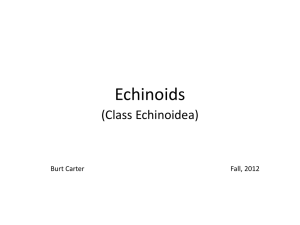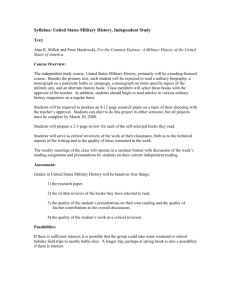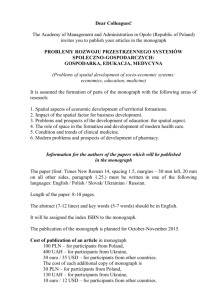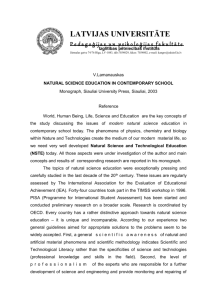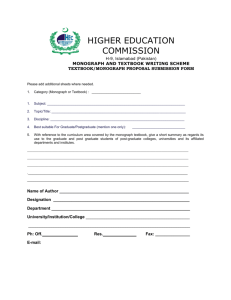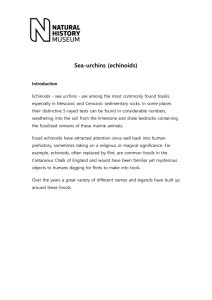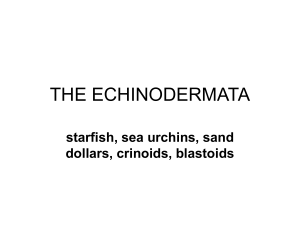Echinoidea neogenica
advertisement
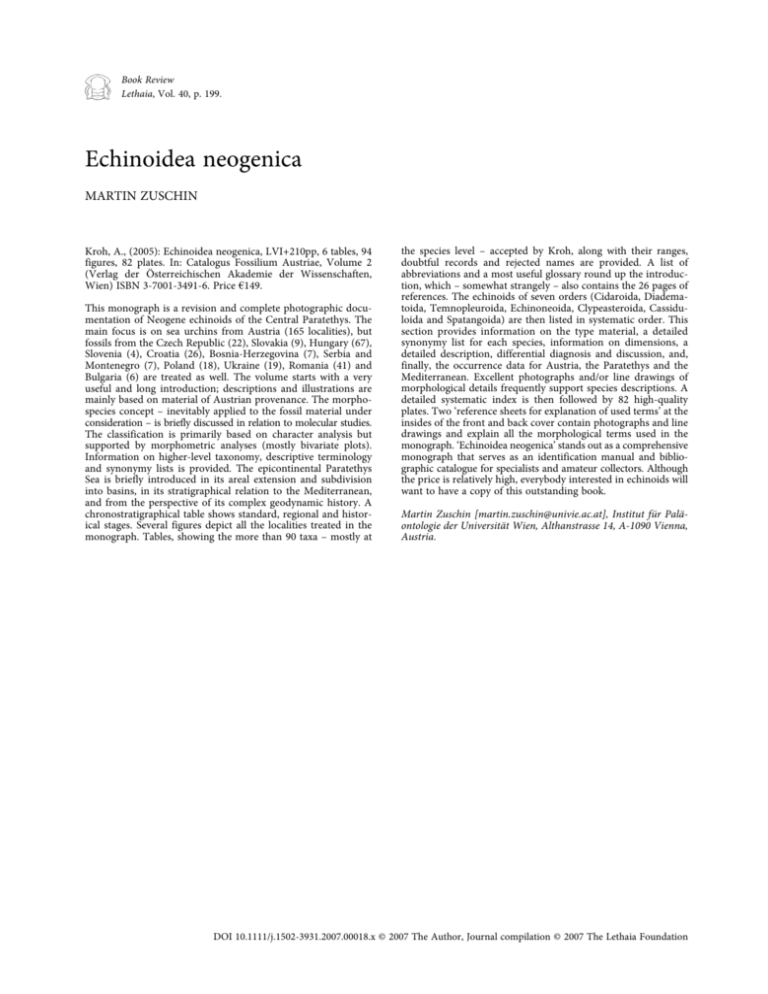
Book Review Lethaia, Vol. 40, p. 199. Echinoidea neogenica Blackwell Publishing Ltd MARTIN ZUSCHIN Kroh, A., (2005): Echinoidea neogenica, LVI+210pp, 6 tables, 94 figures, 82 plates. In: Catalogus Fossilium Austriae, Volume 2 (Verlag der Österreichischen Akademie der Wissenschaften, Wien) ISBN 3-7001-3491-6. Price a149. This monograph is a revision and complete photographic documentation of Neogene echinoids of the Central Paratethys. The main focus is on sea urchins from Austria (165 localities), but fossils from the Czech Republic (22), Slovakia (9), Hungary (67), Slovenia (4), Croatia (26), Bosnia-Herzegovina (7), Serbia and Montenegro (7), Poland (18), Ukraine (19), Romania (41) and Bulgaria (6) are treated as well. The volume starts with a very useful and long introduction; descriptions and illustrations are mainly based on material of Austrian provenance. The morphospecies concept – inevitably applied to the fossil material under consideration – is briefly discussed in relation to molecular studies. The classification is primarily based on character analysis but supported by morphometric analyses (mostly bivariate plots). Information on higher-level taxonomy, descriptive terminology and synonymy lists is provided. The epicontinental Paratethys Sea is briefly introduced in its areal extension and subdivision into basins, in its stratigraphical relation to the Mediterranean, and from the perspective of its complex geodynamic history. A chronostratigraphical table shows standard, regional and historical stages. Several figures depict all the localities treated in the monograph. Tables, showing the more than 90 taxa – mostly at the species level – accepted by Kroh, along with their ranges, doubtful records and rejected names are provided. A list of abbreviations and a most useful glossary round up the introduction, which – somewhat strangely – also contains the 26 pages of references. The echinoids of seven orders (Cidaroida, Diadematoida, Temnopleuroida, Echinoneoida, Clypeasteroida, Cassiduloida and Spatangoida) are then listed in systematic order. This section provides information on the type material, a detailed synonymy list for each species, information on dimensions, a detailed description, differential diagnosis and discussion, and, finally, the occurrence data for Austria, the Paratethys and the Mediterranean. Excellent photographs and/or line drawings of morphological details frequently support species descriptions. A detailed systematic index is then followed by 82 high-quality plates. Two ‘reference sheets for explanation of used terms’ at the insides of the front and back cover contain photographs and line drawings and explain all the morphological terms used in the monograph. ‘Echinoidea neogenica’ stands out as a comprehensive monograph that serves as an identification manual and bibliographic catalogue for specialists and amateur collectors. Although the price is relatively high, everybody interested in echinoids will want to have a copy of this outstanding book. Martin Zuschin [martin.zuschin@univie.ac.at], Institut für Paläontologie der Universität Wien, Althanstrasse 14, A-1090 Vienna, Austria. DOI 10.1111/j.1502-3931.2007.00018.x © 2007 The Author, Journal compilation © 2007 The Lethaia Foundation
